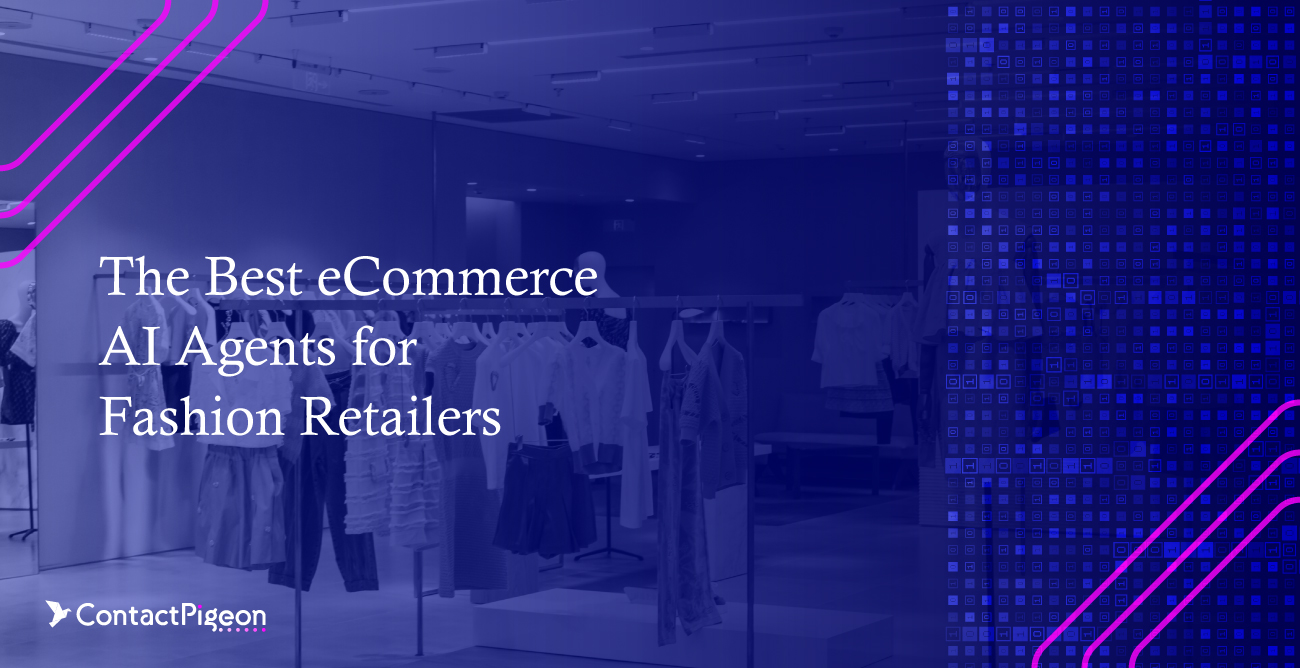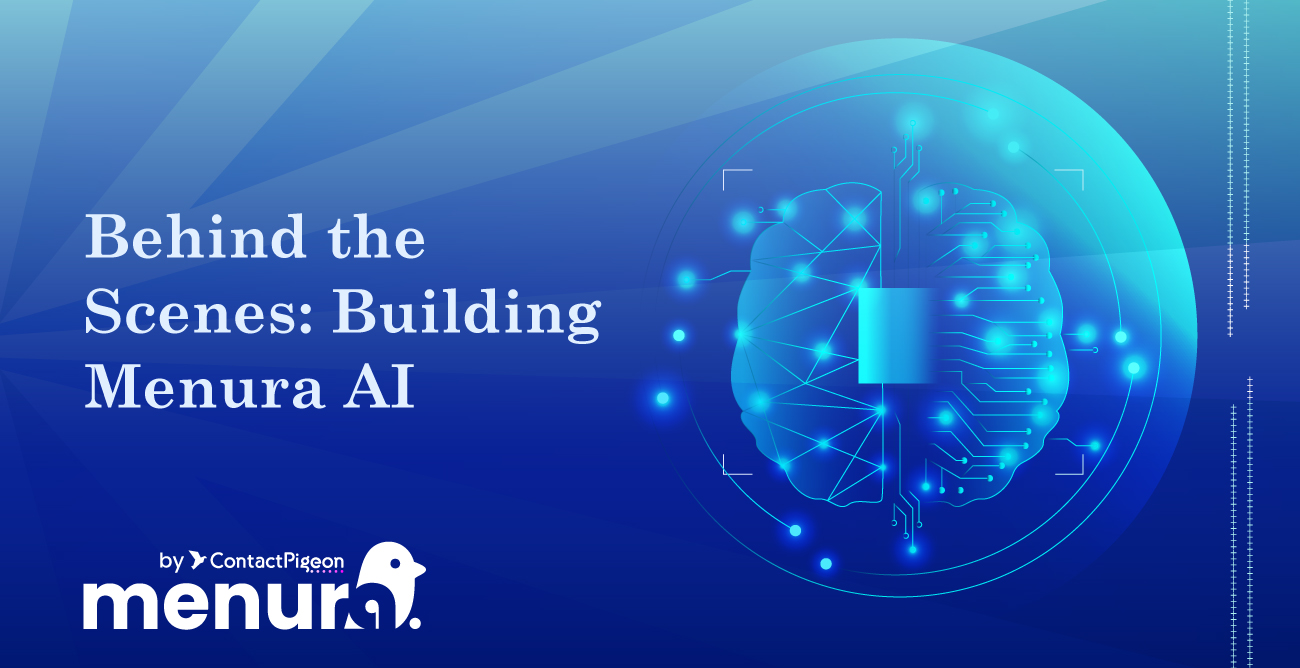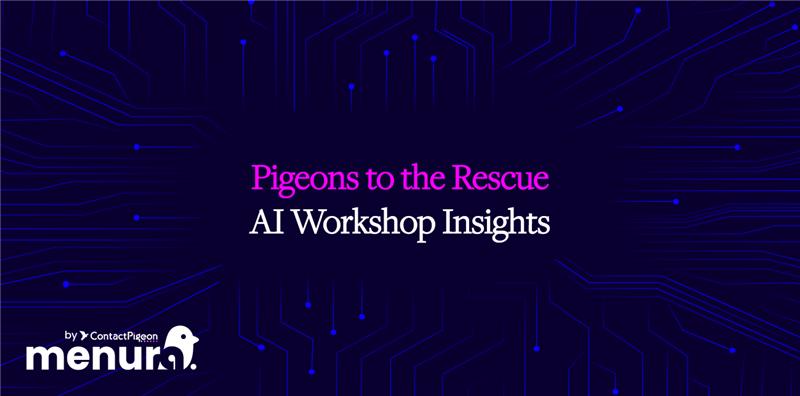Fashion shoppers now expect instant support, personalized styling, and frictionless buying journeys, turning automation into a core revenue driver rather than a backend efficiency play. With the rapid rise of the Best eCommerce AI Agents, the industry is shifting fast. According to McKinsey, 88% of companies already use AI in at least one business function, underscoring how quickly intelligent automation is becoming the norm. This guide is designed for fashion retail and eCommerce leaders looking to understand the top AI chatbots, the evaluation criteria that truly matter, and how these tools drive measurable ROI.
Let’s break down the key points ▾
The Best eCommerce AI Agents are redefining fashion retail by delivering instant support, personalized styling, and seamless shopping journeys.
Fashion brands are adopting AI fast, with 88% of companies using AI in at least one business function (McKinsey), proving intelligent automation is now the norm.
Evaluating AI agents requires focusing on the criteria that truly matter: NLP accuracy, personalization depth, retail-specific logic, integrations, governance, and multilingual support.
AI agents vary widely in capabilities, from styling engines and semantic search to service bots and omnichannel commerce assistants.
This guide helps fashion retailers compare top vendors and identify the AI agents that best support revenue growth, CX improvement, and omnichannel performance.
How to evaluate AI agents for fashion
To ensure a fair and meaningful comparison, we evaluated the Best eCommerce AI Agents using criteria that directly impact fashion e-commerce performance. These factors reflect the capabilities that matter most to apparel and footwear brands, from personalization depth to operational reliability. Below is the framework we used to assess how well each solution supports real-world fashion retail needs.
Core criteria to look for
| Core Criteria | What It Means |
|---|---|
| NLP maturity & accuracy | Measures how well the AI understands intent, context, and nuance — critical for delivering human-grade conversations. |
| Deflection rate & CSAT impact | Shows how effectively the chatbot resolves inquiries without human intervention while maintaining or improving satisfaction. |
| Personalization depth | Evaluates how well the agent tailors recommendations and styling based on behavior, preferences, and purchase history. |
| Product catalog, OMS, CRM, ESP integrations | Determines whether the AI can pull real-time data, trigger workflows, and personalize interactions across your tech stack. |
| Multilingual support | Ensures the chatbot can serve global shoppers consistently across languages and regions. |
| Good client review/reputation | Validates real-world performance via retailer feedback, case studies, and independent review platforms. |
| Expertise in Retail | Confirms the vendor understands retail realities like inventory, returns, promotions, and omnichannel journeys. |
| Dedicated Support Availability | Assesses access to onboarding, strategic guidance, and rapid technical support for long-term success. |
| Security, privacy, GDPR compliance | Ensures sensitive customer and transactional data is protected and all processes meet regulatory requirements. |
| Governance: guardrails, moderation, workflows | Evaluates the safeguards preventing hallucinations, enforcing brand tone, and controlling approval workflows. |
Specific capabilities of a top AI agent solution for fashion retailers
Before we compare specific vendors, it helps to unpack what the Best eCommerce AI Agents actually do in a fashion context. Not every agent serves the same purpose, some focus on styling, others on search, and others on service and order tracking. The table below breaks down the main AI agent types retailers use today, along with their impact on the shopping experience.
| AI Agent | What It Does | Pros | Cons |
|---|---|---|---|
| 1. Virtual Stylist / Outfit Recommender | Suggests outfits based on user preferences, body type, occasion, weather, trends, or what’s already in their cart. | Boosts AOV (average order value) · Makes shopping fun and personalized · Reduces returns through better fit/style matching. | Needs high-quality product tagging · Can feel generic if not trained on your brand aesthetic and target audience. |
| 2. Product Search & Filtering Agent (Semantic Search) | Helps users find items using natural language (e.g., “flowy summer dress under 60” or “black wide-leg trousers for office”). | Speeds up product discovery · Handles spelling errors and vague descriptions · Improves conversion from search and PLP. | Requires well-structured product data · Can surface sold-out items unless fully synced to inventory and availability. |
| 3. Customer Support & Order Tracking Bot | Answers FAQs, order and shipping status, returns, size guides, care instructions, and policy-related questions. | Reduces human workload · Available 24/7 · Can integrate with CRM and order database for real-time updates. | Complex issues still require human agents · Needs careful training and tone of voice guidelines to avoid feeling “robotic”. |
Differences between AI stylist apps and AI eCommerce agents
Before diving into the top vendors, it’s important to distinguish between simple AI stylist apps and the Best eCommerce AI Agents. The table below highlights the key differences so retailers understand why stylist tools alone cannot drive meaningful revenue or omnichannel impact.
| Capability | AI Stylist Apps | True AI Commerce Agents |
|---|---|---|
| Product Catalog Connection | No connection to real inventory or product data; generates abstract outfit ideas. | Connected to live product catalogs, stock levels, variants, and pricing. |
| Personalization Capabilities | Generic styling with no knowledge of customer history or preferences. | Uses CDP data—purchase history, sizes, behavior, CLV, loyalty—to personalize every recommendation. |
| Channels Supported | Single-channel apps (mobile or web only). | Works across on-site, email, SMS, push, WhatsApp, and support channels. |
| Impact on Revenue | No measurable impact on AOV, conversions, or repeat purchase rate. | Directly optimizes AOV, conversion rate, bundling, and retention. |
| Data & System Integrations | Standalone tools with no CRM, CDP, PIM, POS, or ERP integration. | Deep integrations with CDP, CRM, PIM, ERP, CMS, and POS systems. |
| Autonomy & Actions | Generates static outfit content but cannot take any actions. | Acts autonomously—builds bundles, triggers journeys, assists loyalty, and responds in real time. |
| Post-Purchase Use Cases | None. Interaction stops after the “outfit inspiration”. | Supports post-purchase styling, fit advice, retention, and return reduction. |
Finding the best AI agent for fashion: Comparison table
The following solutions represent the most advanced AI chatbots and digital agents shaping fashion eCommerce in 2025. Each platform was selected based on measurable CX impact, depth of automation capabilities, real-world retail performance, and its ability to support fashion-specific needs such as styling, fit guidance, and high-volume product discovery. These are the tools leading retailers rely on to elevate customer experience, reduce operational costs, and drive incremental revenue through smarter, conversational shopping
| Solution | Primary AI Role | Fashion-specific Capabilities | Customer Data & Personalization Depth | Omnichannel Reach | Implementation Complexity | Ideal Retail Profile |
|---|---|---|---|---|---|---|
| Menura AI (ContactPigeon) | Retail-native AI commerce agent that combines product discovery, guided selling and customer assistance. | Contextual product pairing, milestone-based triggers and styling logic fused with live catalog data. | Deep. Uses CDP data such as CLV, RFM, loyalty tier, recency and category affinity for dynamic personalization. | Strong. Works across on-site experiences, chat, email, SMS, push and WhatsApp through the ContactPigeon stack. | Moderate. Fast onboarding when product taxonomy and events are in place. | Mid to large EU retailers in fashion, beauty, grocery and specialty that want one agent to drive revenue and CX. |
| Bloomreach Clarity | Enterprise search, merchandising and personalization engine for large commerce ecosystems. | Indirect. Can support fashion through rules and behavioral data but is not dedicated to fashion semantics or styling. | Moderate. Strong behavioral and event data, but customer insight is oriented around on-site activity and product performance. | Limited. Primarily focused on on-site search and product discovery layers. | High. Requires enterprise engineering resources and complex integrations. | Global enterprise retailers with large SKU counts and mature digital teams. |
| Vue.ai | Fashion-focused AI for catalog intelligence, styling automation and enrichment workflows. | Strong. Automated attribute tagging, visual similarity, outfit generation and fashion taxonomies for apparel and accessories. | Low to moderate. Focuses on product-level enrichment rather than granular customer histories or CLV models. | Limited. Mainly impacts PDPs, recommendation widgets and merchandising, not omnichannel journeys. | Moderate. Requires image quality, consistent catalog data and technical integration for best results. | Large fashion retailers and marketplaces that need scalable catalog and styling automation. |
| Syte | Visual search and product discovery platform that uses image recognition to surface similar items. | Strong in visual similarity. Recognises patterns, colours and styles to improve discovery in fashion and lifestyle categories. | Low. Relies on session behaviour and catalog data rather than long term customer histories or loyalty context. | Limited. Primarily embedded in the website experience, search and PDP layers. | Moderate. Needs strong visual assets and integration with the ecommerce front end. | Fashion and lifestyle brands with rich imagery that want to upgrade visual discovery without changing their stack. |
| Constructor.io | AI-first search and recommendation engine that optimizes product findability and ranking logic. | Moderate. Supports fashion use cases through behavioural data, but is not purpose-built for fashion semantics or styling. | Moderate. Uses clickstream and intent signals to personalise results, rather than deep CDP-style profiles. | Limited. Focused on on-site search, PLPs and recommendations instead of cross-channel experiences. | High. More technical implementation and tuning, especially for high-traffic or multi-store environments. | High SKU retailers that want to maximise on-site search performance and product discovery. |
1. Menura AI Agent by ContactPigeon
What it is:
A fully retail-native AI commerce agent that unifies product discovery, personalization, and customer assistance across every channel — something no other vendor in this list delivers end-to-end.
Standout features:
Real-time agentic decision-making powered by ContactPigeon’s CDP (CLV, RFM, affinity, behavior), enabling Menura to act like a trained retail associate — not just a search or tagging tool.
Pros:
- Purpose-built for retail and GDPR environments
- Omnichannel-native (email, SMS, push, on-site, WhatsApp): others only operate on-site
- Understands individual customers, not only products (unique advantage vs catalog-based tools)
- Optimizes revenue outcomes (AOV, repeat purchases, retention)
- Integrates deeply with loyalty tiers, triggers, milestones
- Fast deployment with enterprise-grade support included
Cons:
- Not necessary for brands with no digital commerce
- Requires good product taxonomy for maximum performance
Pricing:
Mid-range; optimized for mid-to-large European retailers.
Best for:
Fashion, beauty, grocery, and specialty retailers who need an AI agent that drives up-selling, cross-selling, retention, and CX across multiple touchpoints.
Integrations:
Shopify, Magento, WooCommerce, BigCommerce, custom APIs, ERP/POS systems.
2. Bloomreach Clarity
What it is:
An enterprise AI search, personalization, and merchandising engine built for complex digital commerce environments.
Standout features:
Deep semantic search and dynamic merchandising powered by large-scale behavioral and catalog intelligence.
Pros:
- Extremely powerful search and recommendation engine
- Ideal for enterprise omnichannel retailers
- Large ecosystem + strong analytics
Cons:
- Too heavy and costly for mid-market EU retailers
- Requires internal technical resources to manage
- Long implementation cycles
Pricing:
High; tailored for enterprise digital commerce teams.
Best for:
Global brands with high SKU volumes and complex infrastructure.
Integrations:
Salesforce Commerce Cloud, SAP Commerce, commercetools, Magento Enterprise.
3. Vue.ai
What it is:
A fashion-focused AI engine delivering product tagging, styling, and discovery experiences for large retail catalogs.
Standout features:
AI models trained specifically on fashion attributes, trends, and visual merchandising concepts.
Pros:
- 100% fashion-specialized AI
- Automated product tagging, styling, and visual enrichment
- Great fit for large fashion retailers and marketplaces
- Strong accuracy in similarity recommendations
Cons:
- Less suited for non-fashion verticals
- Not built for omnichannel activation (email/push/on-site journeys)
Pricing:
Mid-to-high depending on scale and catalog enrichment needs.
Best for:
Fashion and apparel brands seeking AI enrichment and visual recommendations.
Integrations:
Shopify Plus, Magento, custom APIs, PIM/ERP connections.
4. Syte
What it is:
A visual search and product discovery platform designed to help shoppers find similar items via image recognition and contextual AI.
Standout features:
Real-time visual search that understands textures, patterns, styles, and fashion-specific metadata.
Pros:
- Market-leading visual search engine
- Excellent for product discovery and PDP optimization
- Strong fashion and lifestyle vertical performance
- Proven uplift in conversion rates
Cons:
- Less powerful in non-fashion categories
- Not a full omnichannel AI agent
- Requires high-quality images and taxonomy
Pricing:
Mid-to-high depending on traffic volume and catalog size.
Best for:
Fashion, home decor, and lifestyle retailers with large visual catalogs.
Integrations:
Shopify, Magento, Salesforce Commerce Cloud, custom commerce APIs.
5. Constructor.io
What it is:
An AI-powered search and recommendation engine optimized for revenue lift and personalized discovery.
Standout features:
Behavioral AI that dynamically re-ranks products based on intent, trends, and merchandising strategy.
Pros:
- Very strong search relevance and product recommendations
- Optimized for revenue metrics (AOV, findability, conversion)
- Strong for multi-brand and high-SKU retailers
- Transparent testing and analytics (A/B-ready)
Cons:
- More technical to implement compared to Klevu
- Higher price point for traffic-heavy brands
Pricing:
Mid-to-high; ROI-focused enterprise/mid-market pricing.
Best for:
Retailers with complex catalogs needing advanced discovery and dynamic ranking.
Integrations:
Shopify, Magento, BigCommerce, commercetools, headless commerce APIs.
Build vs buy an AI agent: What’s best for the fashion industry?
| Dimension | Build (Pros) | Build (Cons) | Buy (Pros) | Buy (Cons) |
|---|---|---|---|---|
| Total cost of ownership / custom development | • Full control over architecture and stack |
• Very high upfront cost • Ongoing engineering expense |
• Lower upfront cost • Faster deployment |
• Recurring vendor fees |
| Data & LLM governance |
• Full control over data pipelines • Full control over guardrails |
• Requires in-house safety expertise • Requires moderation & compliance ops |
• Vendor provides governance framework • Built-in moderation tools |
• Limited customization of guardrails |
| Infrastructure & maintenance complexity | • Full control over infrastructure decisions |
• Requires ongoing updates • Requires hosting & monitoring • Requires scaling management |
• Vendor handles maintenance • Vendor handles updates • Vendor handles scaling |
• Less control over model update timing |
| In-house constraints & talent scarcity | • Ability to create proprietary IP |
• Requires ML engineers • Requires prompt engineers • Requires AI product owners |
• No need for AI engineering hires | • Dependence on vendor roadmap |
| Risk of stale intents & model drift | • Custom retraining whenever needed |
• Requires continuous monitoring • Requires dataset refresh |
• Vendor provides ongoing training updates | • Updates may not always match brand needs |
| When building makes sense vs buying |
• Unique use cases • Proprietary data advantage • Long-term AI strategy |
— |
• Need speed • Need reliability • Need proven CX uplift • Limited AI resources |
— |
Additional Resources for Fashion Retailers
or readers looking to dive deeper into data-driven growth, AI maturity, the Best eCommerce AI Agents, and high-performing CX strategies in fashion, here are curated internal resources to continue exploring:
- Fashion personalization studies — Research-backed insights on how tailored recommendations, styling logic, and taste profiles drive measurable lifts in AOV and conversion.
- ContactPigeon case studies — Real-world examples of apparel and footwear brands increasing revenue, CLV, and retention through automation and omnichannel personalization.
- Predictive analytics in retail — Best practices and examples of forecasting demand, identifying next-best actions, and using behavioral data to optimize merchandising and CX.
- Black Friday apparel benchmarks — Performance trends and KPIs for fashion eCommerce during peak season, including conversion, cart abandonment, and revenue patterns.
Frequently Asked Questions
▾
What is an AI agent in fashion eCommerce?
An AI agent is a conversational system that helps shoppers with styling, product search, recommendations, and support.
How do AI fashion stylists personalize recommendations?
They analyze browsing behavior, purchase history, product attributes, and user preferences to suggest outfits and complementary items.
Can AI chatbots increase conversions for fashion brands?
Yes — fashion brands typically see uplift when AI helps customers find the right size, fit, and outfit combinations faster.
What integrations do AI agents need for fashion retail?
Key integrations include product catalog, inventory, CRM, OMS, and ESPs to enable accurate recommendations and real-time responses.
Should a fashion brand build or buy its AI agent?
Most brands buy for speed, lower cost, and better reliability, while building fits only large teams with strong AI engineering resources.
Are AI agents safe and GDPR compliant?
Yes, when the vendor provides strict data governance, encryption, consent handling, and compliant storage practices.
Can AI agents reduce customer support workload?
Absolutely — they automate FAQs, track orders, manage returns, and answer fit-related questions before escalating to human agents.
Do AI chatbots work for multilingual fashion stores?
Yes — modern AI agents support multi-language understanding and responses, enabling global customer experiences.
Shaping the next era of fashion CX with intelligent automation
Fashion retail is entering a new era where personalization, speed, and intelligent automation define the brands that stay ahead. AI agents like Menura AI enable this shift by combining real-time styling guidance, fit intelligence, and omnichannel responsiveness to elevate CX while driving measurable gains in AOV, conversion, and operational efficiency. Ready to see how AI agents can transform your fashion eCommerce experience? Book a personalized Menura AI demo and discover how leading retailers are redefining digital shopping with smarter, more intuitive customer interactions.



